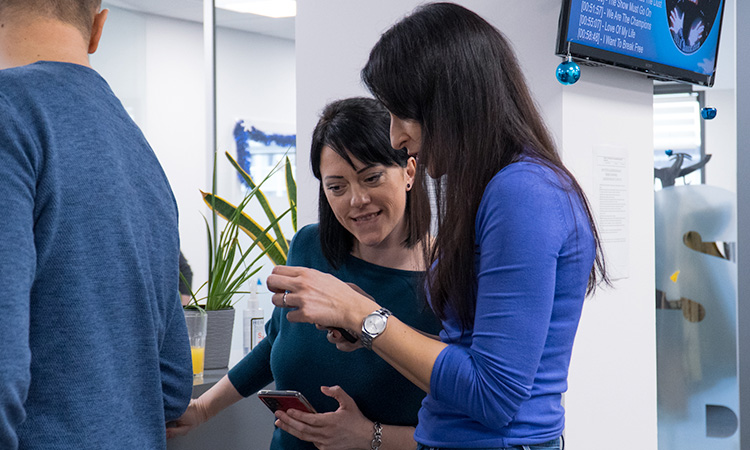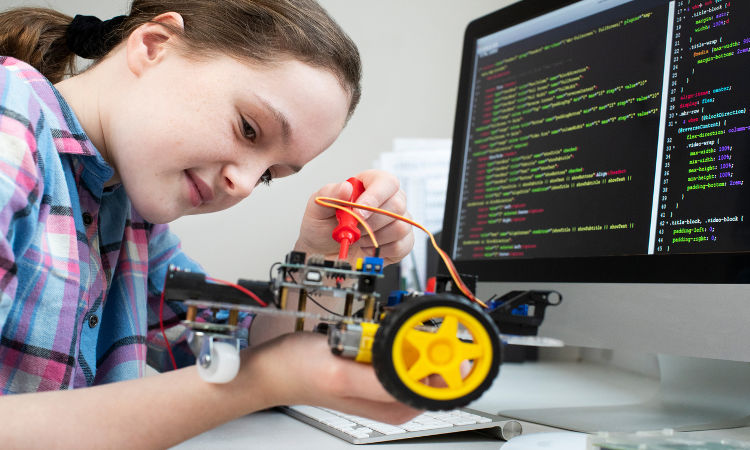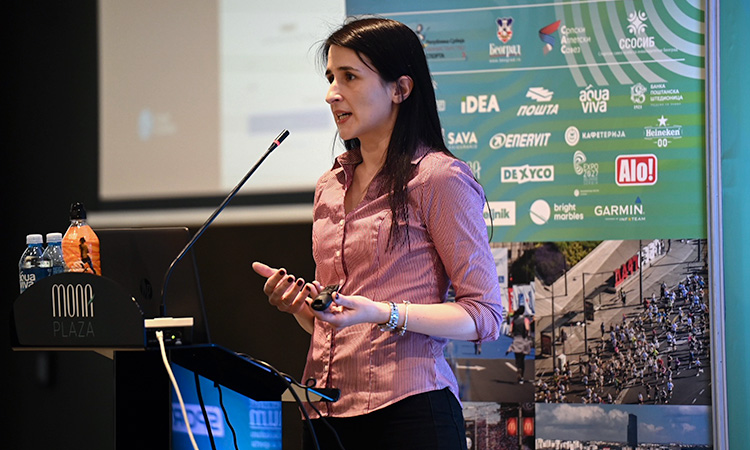Introduction: A Personal Journey into the World of Science
Growing up, my world was less about dolls and dress-up, more about eagerly waiting for my turn to play on my brother’s PC during his intense gaming marathons. Today, I’m still not your go-to person for makeup tips, and my journey into motherhood was a leap into the unknown.
As a kid (as you can probably tell), I was more of a tech geek than an ordinary girly-girl. However, my family, warm but traditional, gently steered me towards the paths they deemed ‘right’. Dreams of coding and tinkering with tech were met with raised eyebrows. So, there I was, walking into the world of psychology, not because I wanted to explore the human mind’s mysteries, but because it was the ‘sensible’ choice. But you know what? Even there, in the world of Freud and Jung, I found myself gravitating towards numbers, research methods, and the analytical side of things. That pursuit led me to a Ph.D., driven not by a desire to practice therapy, but by my love for the science of psychology.
Fast forward to 2016, after years of detours, I finally returned to where I truly belonged – the IT sector. My journey might have been unconventional, but it brought me back to my first love: technology and innovation.
This story, my story, speaks volumes about breaking norms and finding your own path. As we celebrate the International Day of Women and Girls in Science, I think of how many women have similar stories, of passions redirected, and paths reshaped. At BrightMarbles Group, we want to live the spirit of this day every day. We believe in a world where innovation isn’t about gender but about great minds coming together. Here, we champion every voice, every talent, because in the end, it’s not just about empowering individuals; it’s about reshaping the future of technology together.
In the following paragraphs and lines, you’ll see me meandering through the archipelagos of women’s impact in an ocean of sustainable, advanced science.
The Critical Role of Women in Science: More Than Just Numbers

Picture this: a world where half its thinkers, innovators, and problem-solvers are barely in the room where decisions are made. That’s pretty much the current scenario in the STEM fields due to the gender gap.
When we’re facing big challenges like global health crises or climate change, having a variety of viewpoints is key to developing solutions that truly work for everyone. In this context, women are indispensable. Representing half of the world’s population, we contribute an equal share of brainpower, creativity, and problem-solving capabilities. But here’s the issue: in the realms of Science, Technology, Engineering, and Mathematics (STEM), women are still hugely underrepresented – according to recent studies, women make up only 28% of the workforce in STEM fields. It’s like trying to complete a complex jigsaw puzzle with half of the pieces missing.
We need to close this gap. Not just because it’s fair, but because our progress in science and as a society depends on it. Every woman who’s not at the science table is a loss of potential, a missed chance to bring new and needed ideas to the forefront.
Why Gender Equality in STEM is Crucial: Celebrating Women’s Impact

Let’s talk about some real women who changed the game. For instance, take Ada Lovelace, often considered the first computer programmer long before computers as we know them existed. Her work laid the foundation for modern computing.
Or consider Marie Curie, a name synonymous with groundbreaking research in radioactivity, which earned her not one, but two Nobel Prizes. Her discoveries have had lasting impacts in medicine and science.
Then there’s Rosalind Franklin, whose work was crucial in understanding the DNA structure but often overshadowed. Her story is about recognizing contributions often left in the footnotes.
And who could forget Katherine Johnson? A mathematician whose calculations were critical to the success of NASA’s space missions. Her story, beautifully depicted in the movie “Hidden Figures,” is a powerful reminder of the silent heroes behind monumental achievements.
More recently, we witnessed Emmanuelle Charpentier and Jennifer Doudna revolutionize gene-editing technology with CRISPR, winning a Nobel Prize for their work. And let’s applaud Dr. Kizzmekia Corbett, an immunologist instrumental in developing the Moderna COVID-19 vaccine, demonstrating the critical role of women in contemporary science. All of them highlight how women in STEM are pushing the boundaries of what’s possible.
In the Netherlands, our home base, we’re continually inspired by Dutch STEM women. From Aletta Jacobs, the first woman to officially attend a Dutch university and a pivotal suffragette, to today’s scientists breaking barriers and empowering women globally. For example, in 2021, The The Hague Humanity Hub City Centre organized an exhibition by “STEM is FEM” to showcase the careers of 12 extraordinary women scientists.
The point is, when we overlook women in STEM, we’re not just sidelining half of the population. We’re neglecting a reservoir of creativity, unique perspectives, and potential breakthroughs. Diverse teams bring new ways of thinking, challenge established norms, and contribute to comprehensive solutions.
In a world racing towards sustainable solutions and innovative breakthroughs, we need all hands on deck. And those hands must include those of women who’ve shown time and again that they’re not just participants in science – they’re trailblazers.
BM Insight: Close to our Novi Sad office in Serbia is the town of Titel, birthplace of Mileva Maric-Einstein, one of the most renowned physicists that has ever attended the Polytechnic Institute in Zurich. We take pride in this extraordinary scientist who carved a path for other women in the world of science.
Navigating the Maze: Why Girls Often Sidestep STEM Careers

Let’s face it: carving a path in STEM as a girl can feel like walking through a maze with hidden traps. Understanding these barriers is crucial to help more girls find their way into these fields.
- Societal and Cultural Stereotypes: This is the first hurdle. The age-old belief that STEM is a ‘boys’ club’ still lingers in the air. It’s not just about what people say; it’s also about what they don’t say. When parents or teachers unconsciously nudge boys towards robotics and girls towards ‘softer’ subjects, it sends a subtle message. Girls start believing STEM isn’t their playground.
- Lack of Female Role Models: Imagine a world where every scientist or tech wizard you hear about is a man. That’s often the world girls grow up in. The scarcity of female role models in STEM is like having a textbook without pictures – it’s harder to visualize yourself in the story. Girls need to see women who have walked and thrived on the STEM path.
- Gender Bias in Education and Resources: It’s in the little things – the kind of toys we give children, the activities we encourage in schools, the stories we tell about male inventors and scientists. This bias, often subtle, can discourage girls from pursuing STEM, making them feel like outsiders in their own interests.
- Self-Doubt: Research shows girls often underestimate their skills in STEM, even when they’re acing the subjects. It’s like looking in a distorted mirror and seeing your abilities as lesser than they are. This self-doubt is a quiet thief, stealing away girls’ aspirations in STEM.
- Limited Opportunities: If STEM were a party, girls would often get invites late. Lack of exposure to STEM activities outside the classroom, like coding clubs or science camps, means fewer girls exploring these fields for fun or future careers.
- Peer Pressure and Social Expectations: This one’s tough. No one wants to feel like the odd one out. The pressure to fit in can steer girls away from STEM, especially if it’s seen as ‘uncool’ or ‘not for girls’. It’s about battling an invisible current that pushes girls away from their interests.
- Workplace Concerns: Fast forward to the future, and the concerns shift to workplace equality – pay gaps, glass ceilings, and sometimes, environments that feel unwelcoming to women. It’s about wondering if you’ll have to fight harder to get the same recognition as your male counterparts.
- Balancing Act: Finally, there’s the myth of ‘having it all’. The perception that STEM careers are rigid and demanding can be daunting, especially for women who aspire to juggle a career and family life. It’s a delicate balancing act that often seems more challenging in STEM fields.
Addressing these issues requires a multi-faceted approach, involving changes in education, societal attitudes, and workplace cultures. Our goal should be to create a world where girls feel as at home in a lab coat or with a coding manual as they do in any other field they choose to pursue.
BM Insight: BrightMarbles Group stands at the forefront of the combat for workplace equality. Hour after hour, day after day, year by year, we support, promote, and encourage all our Mibsters to pursue their professional interests, each gender alike. In 2023, we held an awareness-raising online meetup about the roles of women in the STEM world. Read more about it in the recap Women in Tech Leadership: Shattering the Glass Ceiling, by our data-driven marketing magi Nastasija Trajanova.
The Persistent Challenges: The Real Picture of Women in STEM

Despite strides towards equality, women in STEM are still climbing an uphill battle. The numbers paint a stark reality. For instance, women receive only about 28% of the total research grants awarded, and their average grant size is nearly 20% smaller than their male counterparts. In prestigious scientific journals, only around 30% of the authors are women, and a mere 25% reach senior academic positions. In fields like AI, the gender gap widens further, with women representing just 22% of the workforce.
But here’s a personal story that reveals another layer of this challenge – the perception gap. I have friends, bright and educated, who genuinely believe that the battle for gender equality in STEM has been won. They see a world where girls can aspire to be anything they want. It’s a hopeful picture, but it overlooks the subtle and systemic barriers that persist.
These friends aren’t alone in their thinking. Many believe that since we’ve made significant progress, the playing field is now level. But the reality is different. The persistent underrepresentation and unequal opportunities in STEM aren’t always visible, especially to those not directly affected by them.
This perception gap is a significant hurdle. It leads to a lack of awareness and, consequently, a lack of action. It’s crucial to bridge this gap, not just through statistics and reports, but by sharing real stories and experiences. We need to highlight not only the achievements but also the ongoing struggles of women in STEM. Only then can we foster a deeper understanding and drive more meaningful change.
We must acknowledge that we still have a long way to go. By recognizing the true extent of the challenges women face in STEM, we can begin to address them more effectively and create a truly equitable and innovative environment.
Empowerment: More than a Buzzword

When we talk about empowerment in the context of women in science, it’s not just a trendy term we throw around. It’s about actively crafting pathways for women to ascend to leadership roles, to be the innovators and changemakers. It’s about recognizing and nurturing their potential to make significant impacts in their fields. At BrightMarbles Group, our commitment transcends mere acknowledgment. We strive to cultivate an environment where the voices of women are influential and inspirational.
Empowerment here means ensuring women have the resources, opportunities, and support to realize their ambitions. It’s about celebrating their successes, not as exceptions but as exemplars of what is consistently achievable. Our aim is to dismantle the barriers that have historically hindered women in STEM fields and replace them with bridges to greater heights.
In our halls, empowerment is seen in mentorship programs where experienced colleagues guide and nurture the next generation. It’s in the policies that ensure equal opportunities and a work culture that values diversity as a strength. It’s in everyday interactions where respect and encouragement are the norms, not the exceptions.
Our mission at BrightMarbles Group is to make empowerment for women in science a lived reality, not just an aspiration. We believe that when women in science are empowered, they don’t just change the game—they set new standards and open up a world of possibilities. Let’s shift from simply talking about empowerment to living it out loud, every day!
Concrete Steps Towards Gender Equality in STEM

Based on all the stats, examples, and the overall position of women in science, here’s the potential action plan for all our girls and women to pave their way to the STEM heights:
- Early STEM Education for Girls: Let’s start young. Introducing STEM to girls through engaging activities like science clubs or coding camps ignites a spark of interest and builds confidence. Imagine a world where girls are as excited about robotics competitions as they are about dancing, for example.
- Supportive School Environments: Schools need to be sanctuaries of encouragement. By training educators to dispel gender stereotypes and offering resources that inspire girls, we can cultivate a generation that sees no limits to their potential.
- Scholarships and Grants for Women: Increase funding opportunities for women in STEM, especially for research and higher education. Scholarships and grants can provide the financial support necessary for women to pursue and sustain their careers in these fields.
- Mentorship Programs: The power of mentorship is profound. When experienced women in STEM guide and support newcomers, it creates a ripple effect of inspiration and empowerment. These programs can offer career advice, networking opportunities, and moral support.
- Promoting Female Role Models: We need to highlight the achievements of women who have broken barriers in STEM in media and educational materials. Showcasing successful women scientists and engineers can inspire and motivate young girls to follow in their footsteps.
- Workplace Equality as the Norm: Gender equality in the workplace is non-negotiable. This means equal pay, equal opportunity, and an environment where women’s voices are heard and respected.
- Fostering Community and Networking: Create platforms for women in STEM to connect, share experiences, and support each other. Networking events, conferences, and online communities can foster a sense of belonging and community.
- Public Awareness Campaigns: It’s time to amplify the conversation about women in STEM. Awareness campaigns can shift public perception and encourage more girls and women to step into STEM roles.
- Research on Gender in STEM: Support research that explores the barriers women face in STEM and effective strategies to overcome them. This research can inform policies and initiatives at both the educational and professional levels.
- Corporate Partnerships: Bridging the gap between education and the workplace is essential. Partnerships can provide practical experience, training, and job opportunities, helping women transition seamlessly from the classroom to the boardroom.
- Policy Advocacy: Policies that back women in STEM – from funding specialized programs to supporting working mothers – are crucial. It’s about creating a framework that nurtures women’s growth in these fields.
- Inclusive Curriculum Development: Let’s rewrite the educational script to include the incredible contributions of women in science and technology. An inclusive curriculum can challenge stereotypes and encourage more girls to pursue STEM education. Be aware that the inclusive curriculum isn’t just about fairness; it’s about accuracy.
In implementing these steps, we are opening doors for women and girls in science and inviting them to lead the way. It’s a journey that requires persistence, passion, and partnership. Together, let’s work towards a future where the halls of science echo with the voices of women!
Conclusion: A Call to Action and Our Commitment

Today, as we mark the International Day of Women and Girls in Science, we’re advocating for change. This day is a compelling call to action, reminding us that the pursuit of gender equality in STEM is not just a women’s issue. It’s a human issue, vital for a sustainable and innovative future. At BrightMarbles Group, our dedication to this cause is strong, today and every day.
We’re not just talking the talk. Last year, we put our beliefs into action by organizing a programming workshop specifically for girls. It was a heartwarming experience to witness their eagerness and passion for areas often labeled as ‘not for girls.’ We saw potential, hope, and the future of science in their eyes. And we’re not stopping there. This year, we’re committed to making these workshops a regular event, to continually inspire and cultivate the next wave of female tech leaders.
But our efforts don’t end with workshops. For any girl out there looking for guidance, inspiration, or a mentor in the world of science and technology, know that we are here for you. Reach out, connect with us, and let’s navigate this journey together.
As we strive to make these changes, our goal is clear: to foster a world where brilliance is the only barrier to entry in science and technology—a world where innovation knows no gender. Join us in this mission. Let’s work together to empower every girl who dreams of a career in science, technology, engineering, or mathematics, supporting them to chase those dreams fearlessly. Let’s create an environment where women in science are not just recognized on special occasions but celebrated every day for their invaluable contributions to our world.
About Author
Nevena Nemeš, the Chief Experience Officer at BrightMarbles Group, is a seasoned professional with a decade’s worth of experience in marketing, product, and business development. Currently pursuing her Ph.D. in Psychology, Nevena pairs her extensive industry knowledge with a deep understanding of user psychology, devising marketing strategies that truly resonate with audiences. Her forward-thinking and innovation-driven approach, coupled with her passion for exploring the behavioral aspects of user experience, empowers her to create digital experiences that resonate profoundly.
